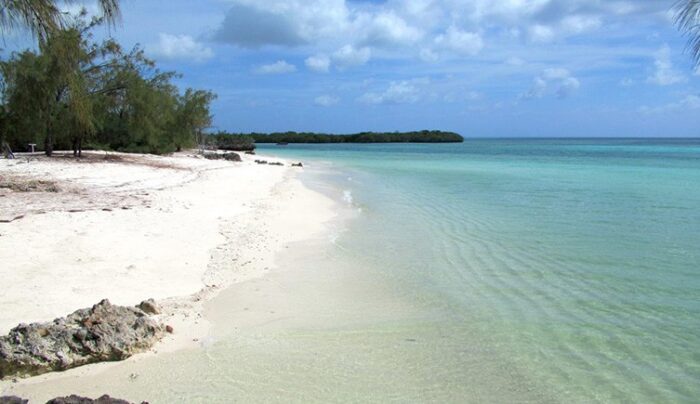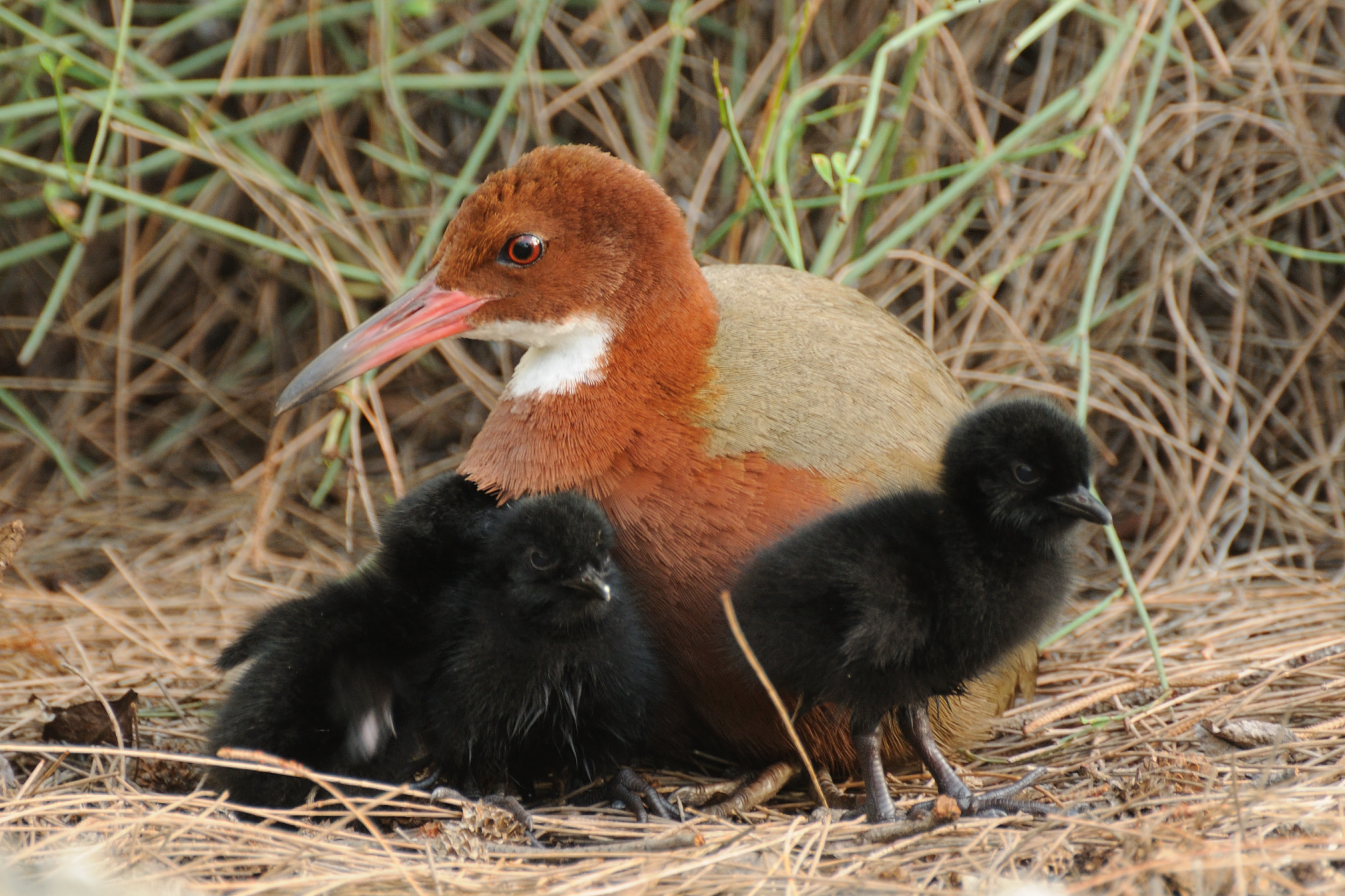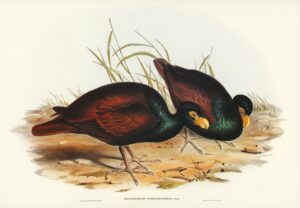At some point hundreds of thousands of years ago, a certain flightless bird colonized an Indian Ocean atoll off the southeast coast of Africa. Then the atoll sank beneath the waves, killing off everything on land.
That would have been the end for the Aldabra rail (Dryolimnas cuvieri aldabranus) — except somehow it wasn’t.
Today, flightless Aldabra rails are the Indian Ocean’s last species of flightless bird. But since they couldn’t have escaped their watery graves by flying when their namesake home atoll disappeared, how did they come back?

Aldabra, a coral atoll off the coast of Madagascar, has submerged at least once, killing all life. Photo: David Stanley via Flickr
They weren’t on rebreathers. Instead, the British Natural History Museum found, the Aldabra rail is the only known bird to have become flightless twice.
“There is no other case that I can find of this happening,” study co-author Dr. Julian Hume told the Museum’s online publication. “It wasn’t as if it were two different species colonizing and becoming flightless. This was the very same ancestral bird.”
The story begins over 136,000 years ago. That’s the date of the oldest Aldabra rail fossil found in the atoll’s sediment. It’s significant because Aldabra rails only evolve from one ancestral parent.
The white-throated rail (Dryolimnas cuvieri) is a flying bird endemic to Madagascar. Its build is similar to its flightless evolutionary offspring — only airier.
View this post on Instagram
At some point prior to 136,000 years ago, white-throated rails arrived on Aldabra, settled down, and lost the ability to leave.
The Natural History Museum explained the phenomenon as a tendency in the birds to build up huge numbers and suddenly make an exodus. Specific reasons for the behavior remain unknown, but something — diminishing food resources, overcrowding, etc. — triggers the white-throated rails to disperse.
They did, then lost flight but flourished on an Aldabra teeming with bizarre prehistoric wildlife. Rails foraged on the forest floor among giant tortoises, and endemic duck species lived on lagoons with horned crocodiles swimming below.
Then, the fossil record abruptly disappears. This isn’t a rarity in and of itself. Total inundation has wiped out life on coral atolls like Aldabra throughout history, the museum pointed out.
When the tides of this most recent, 136,000-year-old annihilation receded, life cropped back up on Aldabra. And Hume located more rail fossils in the sediments dating to the era.
“We found the leg bone of a rail in these deposits,” he told the museum. “But from that one bone we can see that it is already becoming more robust when compared to the flying rail, showing that the bird is getting heavier and so losing its ability to fly.”
According to the journal PLOS One, only 26 bird families worldwide have experienced evolutionary flight loss (typically on islands). With their tendency to abandon land en masse, white-throated rails are adept at finding islands — and why they go flightless so quickly might reflect their hatchling behavior.
Hume said the birds are born with the ability to run “really fast” right out of the egg. They scamper around after their parents, who follow larger fauna like tortoises to snatch insects from disturbed leaf litter.
From fossil deposits, Hume’s team found the white-throated rail became flightless again in under 16,000 years — possibly the fastest-ever transition to flightlessness in a bird.






